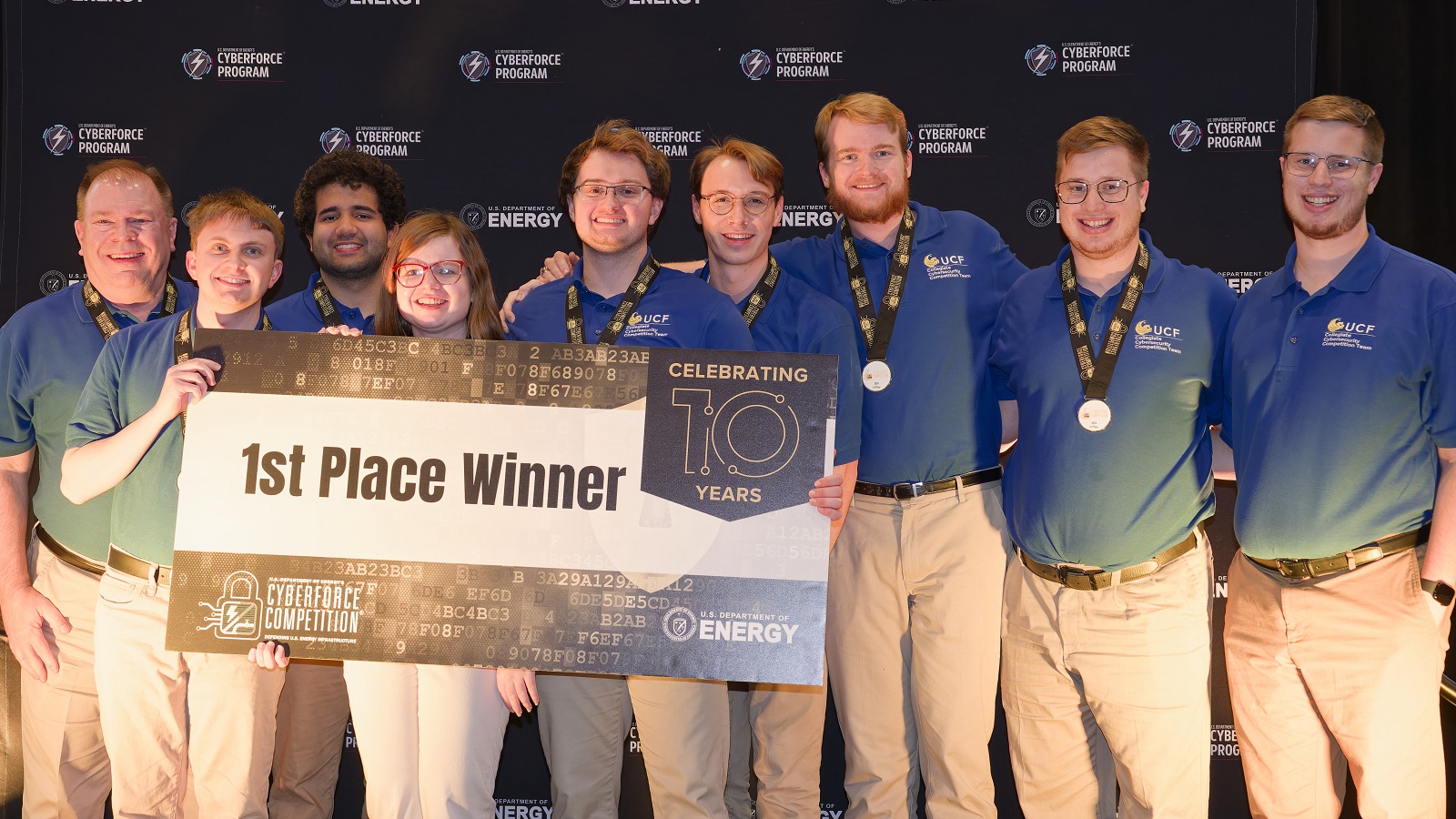A new project at the U.S. Department of Energy’s Thomas Jefferson National Accelerator Facility will use a quantum simulator to model experiments at the EIC. This device uses quantum computing to simulate carefully crafted models of experiments that are being proposed for the collider.
The real EIC will help scientists learn more about the internal structure of protons and neutrons by colliding them with electrons at a multibillion-dollar facility to be built at DOE’s Brookhaven National Laboratory with Jefferson Lab partnering in the effort. The quantum simulator version of it, meanwhile, will live on an optical table at the University of Virginia.
“Our experimental physicist colleagues are going to build the EIC at Brookhaven National Lab. In the meantime, we theorists are going to simulate it,” said Robert Edwards, a senior staff scientist in the Theory Group at Jefferson Lab and the principal investigator on the project.
This quantum computer-based “EIC on a Table Top” is a three-year project funded by the Laboratory Directed Research & Development program, which provides resources for Jefferson Lab personnel to make rapid and significant contributions to critical science and technology problems relevant to the mission of Jefferson Lab and the DOE. The LDRD project is supporting the development of an “EIC on a Table Top” testbed to explore the concept of using quantum computing for QCD calculations.
Simulating Experiments
In an EIC, nuclear physicists hope to reveal more about how quarks and gluons, the particles that make up the neutrons and protons in atomic nuclei, interact and arrange themselves. The EIC can be thought of as a sophisticated microscope that allows nuclear physicists a view inside these particles with high resolution.
To enable that view, the EIC will accelerate beams of electrons and ions to nearly the speed of light and then smash them together. The ions are ordinary atoms that carry protons and neutrons inside their nuclei, but the ions have an extra electrical charge that allows them to be accelerated. After the two beams of particles are smashed together, the physicists identify which particles come flying out of the electron-ion collisions.
In the EIC on a Table Top, theorists will simulate what happens when the ions and electrons smash together using quantum chromodynamics, the theory that describes how quarks and gluons interact. Unfortunately, Edwards explained, classic computing techniques aren’t powerful enough to make detailed simulations from the theory of QCD of the particles that result from collisions in an EIC.
“When we collide ions and electrons, the quarks and gluons can reform into other particles,” Edwards said. “And that’s the thing that’s difficult to calculate from the theory. Quantum computing could help enhance these calculations related to the EIC.”
Quantum computing uses the qubit as a basic unit of information, which can operate more quickly than classical computing due to a quantum phenomenon called entanglement. Because quantum computing can access information in a more efficient way than classical computing, Edwards and the other physicists on this project will use it for the calculations that are not amenable to classical computing techniques.
That’s where Olivier Pfister comes in. He’s a professor of physics at the University of Virginia and another investigator on the project. Back in March 2020, Edwards invited Pfister to come speak at a mini lecture series he organized at Jefferson Lab.
The lecture series, titled “Quantum Computing and Quantum Information Science for Nuclear Physics,” brought in speakers to teach an audience of students and faculty about quantum computing and quantum information science with funding from a Quantum Horizons DOE grant.
Pfister is an experimentalist who builds quantum computers using laser light with his Atomic and Molecular Optics group at UVA. His lecture explained the basics of quantum information science.
“His lecture was fantastic. The students loved it,” Edwards said. “It was very understandable.”
Quantum Collaboration
Afterward, Pfister and Edwards started talking about how they could collaborate on a nuclear physics project that was supremely suited for quantum computing. They decided that Pfister’s laser-based quantum computer prototype could be adapted to perform calculations relevant to the EIC – in other words, it could act as a quantum simulator for the EIC.
“My group has pioneered the field of quantum optics for quantum computing, and I really believe we can get somewhere interesting with optics,” Pfister said. “But this is a two-way collaboration, for sure.”
Edwards will help program the optics-based quantum computing system at UVA to behave like the EIC. An advantage of the optics-based quantum computing system is that the basic unit of computing is a continuous “qumode” that is not limited to a bit, which can only take two values. This feature helps to improve the scalability of the system. Edwards will figure out what to ask the quantum simulator to do to simulate the results of the EIC calculations they are interested in.
The optics-based quantum computing system will need lots of modes to perform the qumode-based calculations related to the EIC. While the system at UVA has already generated entangled qumodes in record numbers, the LDRD project will enable Jefferson Lab staff to apply their expertise to help control and further scale up these qumodes.
“It is definitely a technical challenge, but it is something our lab is very good at doing,” Edwards said. “We are using our technical expertise at electronics and detector systems to try and enhance the system.”
By Chris Patrick
-end-
Jefferson Science Associates, LLC, a joint venture of the Southeastern Universities Research Association, Inc. and PAE, manages and operates the Thomas Jefferson National Accelerator Facility, or Jefferson Lab, for the U.S. Department of Energy’s Office of Science.
DOE’s Office of Science is the single largest supporter of basic research in the physical sciences in the United States and is working to address some of the most pressing challenges of our time. For more information, visit https://energy.gov/science.



